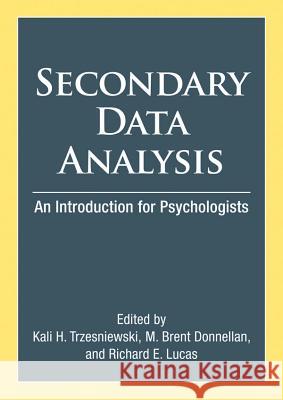Secondary Data Analysis : An Introduction for Psychologists » książka
Secondary Data Analysis : An Introduction for Psychologists
ISBN-13: 9781433808760 / Angielski / Twarda / 2010 / 245 str.
The use of secondary data, or existing data that is freely available to researchers who were not involved in the original study, has a long and rich tradition in the social sciences. In recent years, the internet has made secondary datasets readily available at the click of a mouse. And yet, whether due to a lack of methodological training or as part of a broader indifference to alternative data collection strategies, psychologists have been surprisingly slow to utilize these useful resources. Secondary Data Analysis: An Introduction for Psychologists provides students and seasoned researchers alike with an accessible introduction to secondary analysis. The book is divided into two sections: Part I provides psychologists with a set of accessible methodological primers, including chapters on using short forms of scales; analyzing survey data with complex sampling designs; and dealing with missing data. (Readers are assumed to possess a working knowledge of multivariate analysis.) Chapters in Part II provide compelling examples of secondary data analysis in various kinds of psychological research, including development and aging, behavioral genetics, cross-cultural psychology, and the psychology of political affiliation. This wide-ranging yet practical book shows how the analysis of secondary data can provide unique and compelling opportunities for advancing psychological science.











